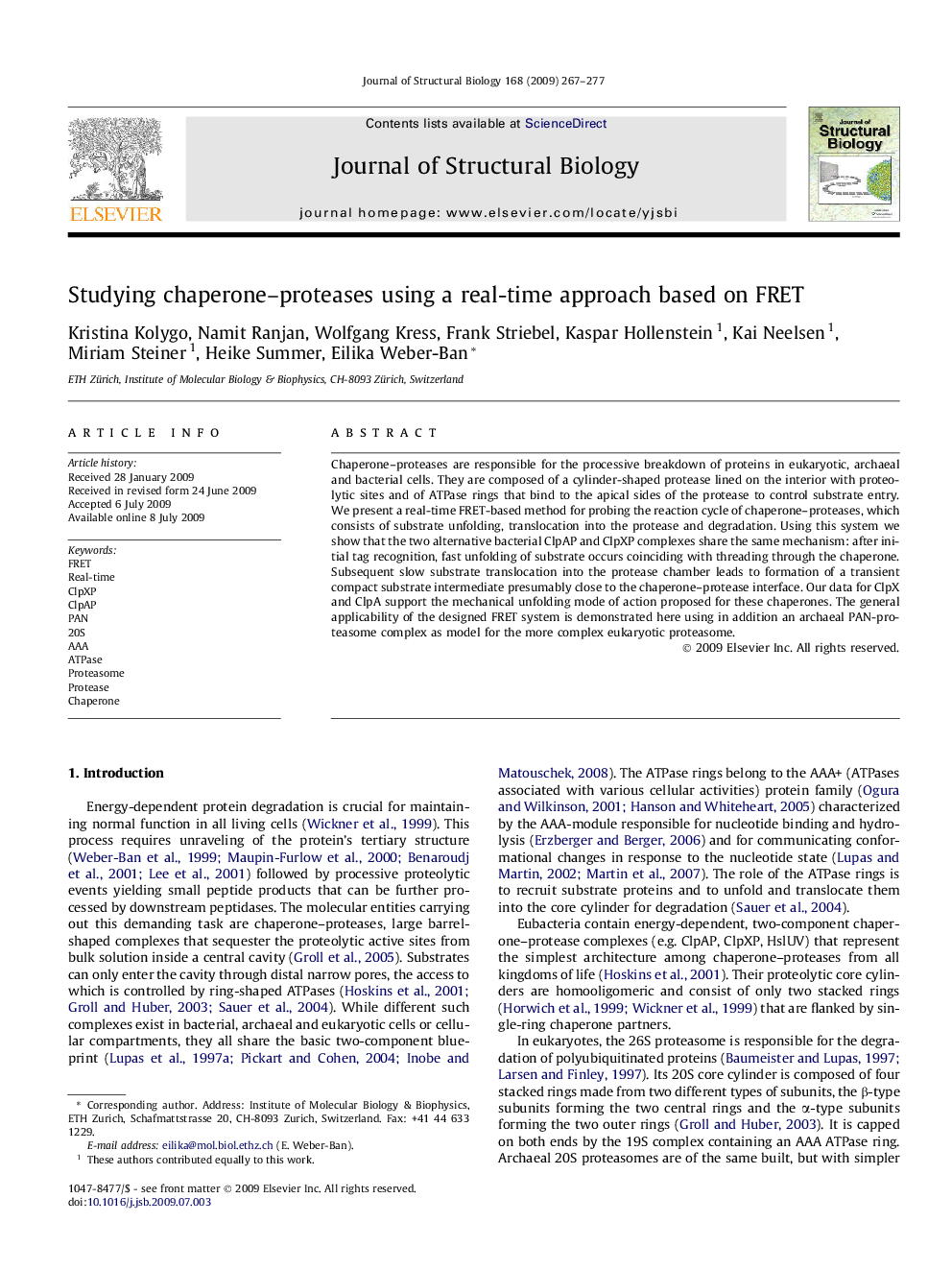| Article ID | Journal | Published Year | Pages | File Type |
|---|---|---|---|---|
| 5915085 | Journal of Structural Biology | 2009 | 11 Pages |
Chaperone-proteases are responsible for the processive breakdown of proteins in eukaryotic, archaeal and bacterial cells. They are composed of a cylinder-shaped protease lined on the interior with proteolytic sites and of ATPase rings that bind to the apical sides of the protease to control substrate entry. We present a real-time FRET-based method for probing the reaction cycle of chaperone-proteases, which consists of substrate unfolding, translocation into the protease and degradation. Using this system we show that the two alternative bacterial ClpAP and ClpXP complexes share the same mechanism: after initial tag recognition, fast unfolding of substrate occurs coinciding with threading through the chaperone. Subsequent slow substrate translocation into the protease chamber leads to formation of a transient compact substrate intermediate presumably close to the chaperone-protease interface. Our data for ClpX and ClpA support the mechanical unfolding mode of action proposed for these chaperones. The general applicability of the designed FRET system is demonstrated here using in addition an archaeal PAN-proteasome complex as model for the more complex eukaryotic proteasome.
